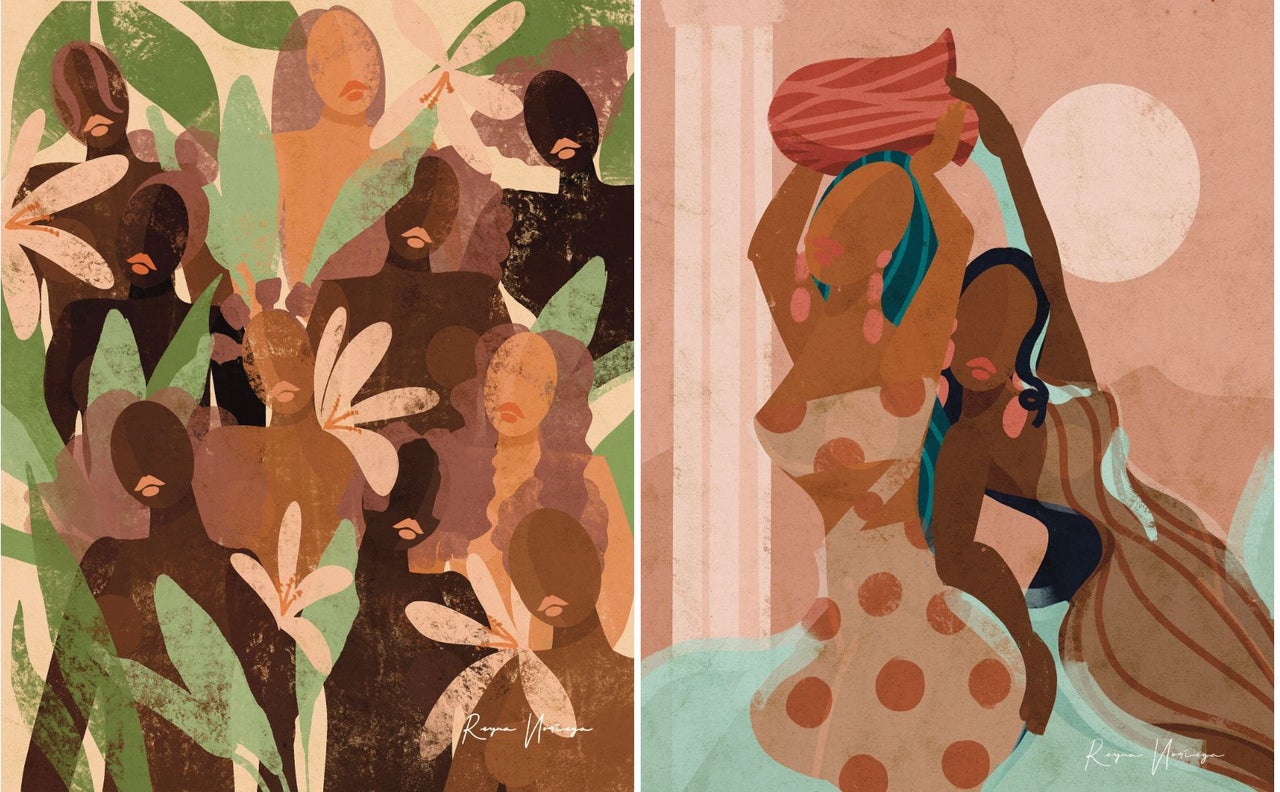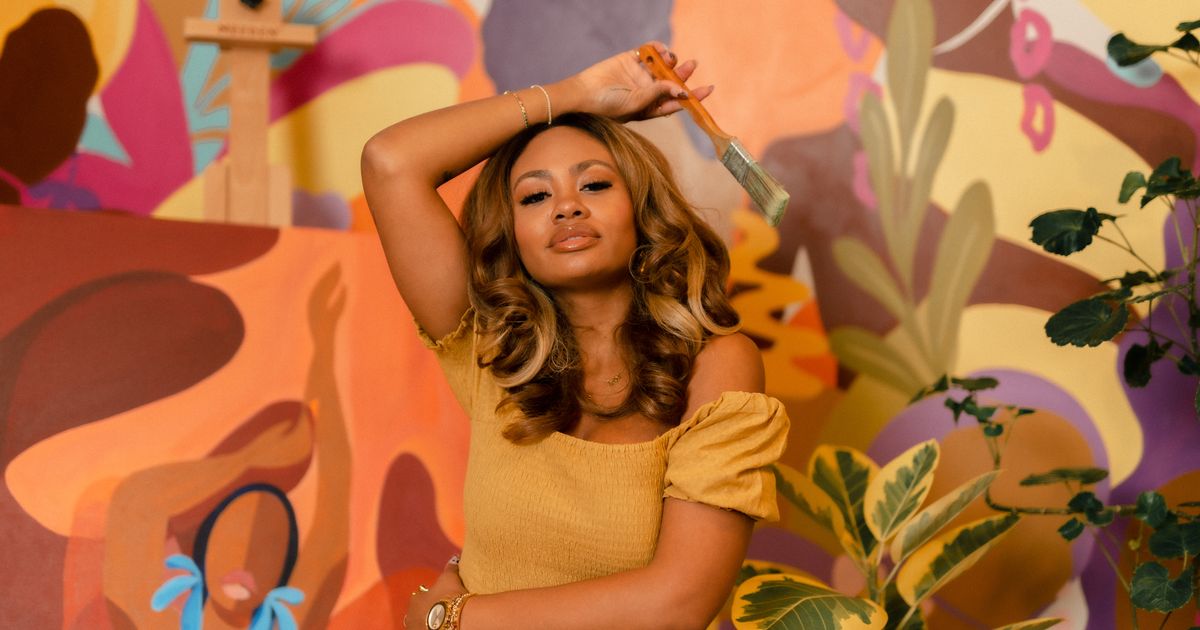Reyna Noriega ’s art is a vibrant ode to womanhood. It affirms Black womanhood, in particular, in a way that isn’t always seen in the art world. And you’ve seen Noriega’s work, even if you don’t think you have.
The Miami-based artist’s work can be seen in homes, at clothing boutiques, on the back of iPhone cases, on the cover of The New Yorker and everywhere else. She recently collaborated with Goody on a line of hair care items featuring her art. Her work depicts a spectrum of women in vibrant tones, different shades of color and a variety of hair textures.
“Typically, it’s either me, or at times it’s the avatar of the higher self. It’s the woman that I’m becoming,” the digital artist and painter told HuffPost of the characters in her pieces. “Other times, it’s women in my family, friends, people that I love, that I draw inspiration from. It really is always super personal.”
Sometimes, you’ll find the women in her work basking in sisterhood. Other times, they’re solo in their solace, finding a hopeful peace. Noriega’s art invites viewers to celebrate women of color in a way that’s long overdue. The figures in her work are portrayed with few facial features ― often none at all ― but they’re far from generic.
“Usually I don’t do facial features in my artwork, and it’s because I wanted women to see themselves in my work versus having the art reflect a certain person or a certain soul,” the Afro-Latinx artist said. “And so when people tell me that they see themselves in it, or their mother, or their aunt, or one of their best friends, or it feels like them, that is the feeling that I want them to have.”
Noriega’s father, who was an artist and graphic designer, introduced her to art when she was young. She began taking it seriously in high school, enrolling in an art elective and interning at a museum. But she noticed the lack of representation of Black and Latinx women in fine art. In 2018, only 4% of the art in galleries and museums across the country was by Black women.
“When I fell in love with art, and I would go into these galleries and these museums, it’s kind of disheartening when you realize that nothing on the wall reflects you,” Noriega, 29, said. “And if it does, it’s very few pieces, and it’s a reflection of our trauma. And so being able to create things that make people feel good and make them feel seen, that was always the number one goal.”
Upon graduating, she became an art teacher before joining a grassroots organization. Experiencing burnout, she decided to leave and start pursuing art independently full-time in 2018.
She found inspiration in Michele Russo, Jean-Michel Basquiat, Joan Miró, Roy Lichtenstein and Pablo Picasso — whose Cubism, she notes, was based in African influence. She’s also inspired by Malika Favre, who’s done work for The New Yorker.
Art became the language she used to communicate her experience of the world. Initially, Noriega didn’t know exactly what her art style was. She realized she was focusing more on what her audience wanted to see and not what she herself wanted to see. And though she’s not a pop artist, a lot of nonconventional art and pop art has moved her.
“It wasn’t until I took a step back and I started focusing more on finding myself as a woman and being true to what felt good for me, versus what I thought my audience would want to see,” she said. “I had to dig deep into the things that represent me, the moments that I feel like my best self, and how do I channel that? And then that style kind of flowed naturally, because those were the things I wanted to see more of in my own home space, and those were the things that brought me joy.”

Her work has since resonated with countless fans, leading to more than 117,000 followers on Instagram, numerous brand collaborations and countless pieces proudly displayed in homes and businesses.
Noriega saw a spike in her business in 2020 when COVID hit. She admits the uptick affected her creative flow a bit. “Everything felt kind of like there’s just this sense of responsibility to perform as a business, versus to create and be in flow as an artist,” she said.
Now, as she settles into a new season in her career, she’s slowing down to find a better balance. That looks like more community building and being more intentional about what she shares about her journey.
While she reflects on her success and next steps, Noriega is planting seeds to explore other paths. She craves more of the fine art process. (“Digital art is kind of instant gratification, whereas fine art can sometimes be a labor of love, and therefore just the meaning and the depth to it can be a little bit deeper.”)
She’s also working on her fourth book, and pursuing deeper bonds with the communities she serves. Noriega is just beginning, but she hopes her work makes an impact on other marginalized artists.
“I hope that it opens the door for artists that have felt like there was one type of way to create, or one right or wrong style to create from,” she said. “And I hope that it reminds people how limitless we are.”
